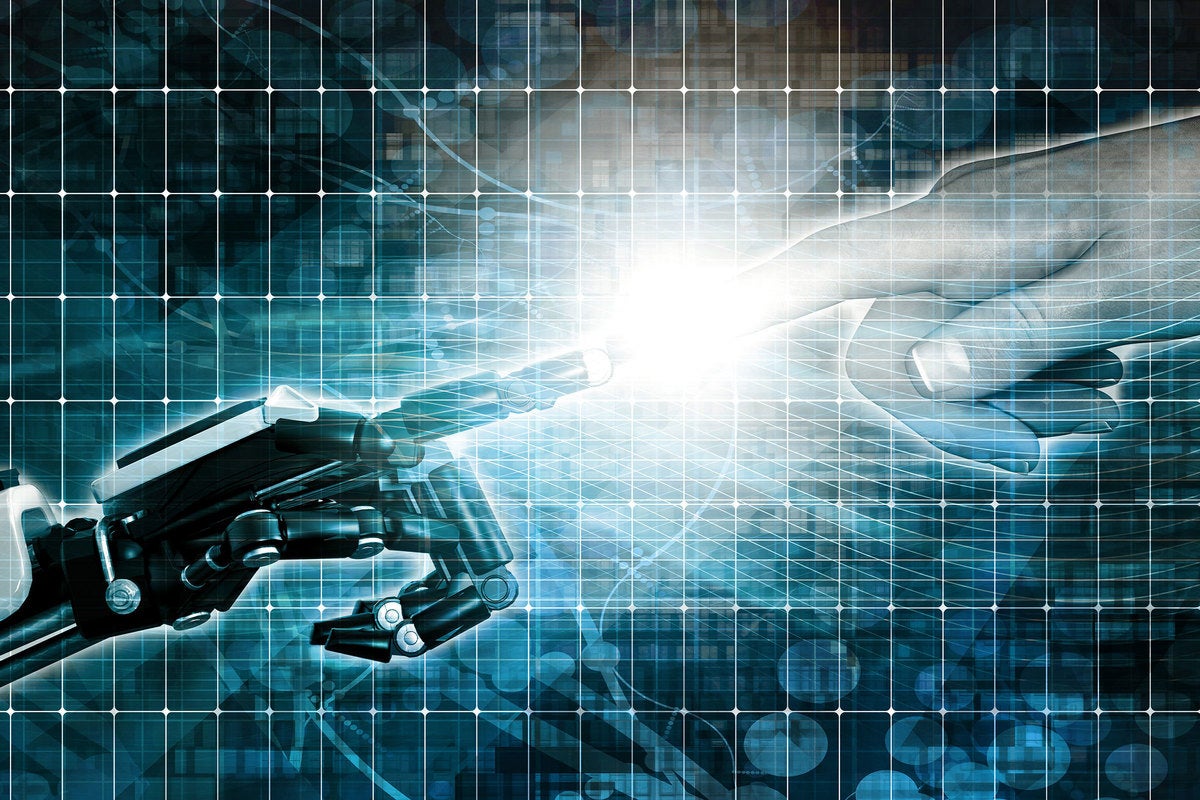We’ve been overselling current capabilities of AI for years, but that doesn’t mean it doesn’t have a bright future. That’s perhaps why Stanford University researchers conceived of a “One Hundred Year Study on Artificial Intelligence” (100 years!) back in 2016, with plans to update the report every five years through 2116, charting the progress of AI along the way. Five years after the inaugural report, the study authors recently released the second report.
The TL;DR? We’ve made “remarkable progress” in just five years, on the back of ever-improving data infrastructure, yet we still fall “far short of the field’s founding aspiration of recreating full human-like intelligence in machines.” What we are discovering, however, is the importance of meshing human and machine to achieve better outcomes. Is it “true” AI? Not as originally envisioned. But arguably it’s better.
Big data? Try ‘easy data’
One of the primary inhibitors to data science (and resultant AI) becoming real has little to do with science and everything to do with data. As FirstMark investor Matt Turck recently called out in “The 2021 Machine Learning, AI, and Data (MAD) Landscape,” only recently have data warehouses evolved “to store massive amounts of data in a way that’s useful, not completely cost-prohibitive, and doesn’t require an army of very technical people to maintain.” Yes, we’ve had data warehouses for decades, but they’ve been complicated and costly. More recently we’ve dabbled in Apache Hadoop, which made things cheaper but still overly complex.
Only in the past few years has the industry focused on maturing our data infrastructure such that it has become dramatically more approachable for mere mortals (who may or may not have a PhD). By making it “finally possible to store and process big data” in a cost-effective manner, Turck argues, it “has proven to be a major unlock for the rest of the data/AI space” in three primary ways:
- The rise of data warehouses considerably increases market size not just for its category, but for the entire data and AI ecosystem.
- Data warehouses have unlocked an entire ecosystem of tools and companies that revolve around them, such as extract, load, transform (ELT).
- Data warehouses liberate companies to start focusing on high-value projects that appear higher in the hierarchy of data needs.
Although Turck chooses to focus on the positive impact of modern data warehouses, the industry has also benefited from other advances in databases (distributed databases, NoSQL, etc.) and the cloud, which has made it easier to iterate on data. Through these and other forces, it has become easier to store and work with data which, in turn, has enabled organizations to do more with that data.
Which brings us back to Stanford’s AI100.
Complementary, not competition
We’ve reached a point where we interact with AI on a day-to-day basis and commonly see its shortcomings. Take Tesla. For all its mismarketing of AI-infused “full self-driving,” Tesla electric cars are nowhere near being capable of safely taking passengers from point A to point B in anything but the most carefully controlled environments. Even so, we’ve seen enough to be intrigued and hopeful for the future.
In the present, the AI100 authors point to three areas where AI has demonstrated real progress:
- Learning in a self-supervised or self-motivated way
- Learning in a continual way to solve problems from many different domains without requiring extensive retraining for each
- Generalizing between tasks—adapting the knowledge and skills the system acquired for one task to new situations
This doesn’t mean AI will replace humans anytime soon, but it does mean that AI is increasingly capable of complementing people in meaningful ways. As they explain, “AI approaches that augment human capabilities can be very valuable in situations where humans and AI have complementary strengths. An AI system might be better at synthesizing available data and making decisions in well-characterized parts of a problem, while a human may be better at understanding the implications of the data.”
For example, the report’s authors say that machines will never be a suitable substitute for people caring for the elderly. “Good care demands respect and dignity, things that we simply do not know how to code into procedural algorithms.” But AI that crunches large quantities of data to suggest to caregivers when an elder may need medicine or other support? Or perhaps using AI-driven image processing to evaluate medications the elder may be taking on her own but that could prove harmful (because of quantity or the nature of the medication itself) and alerting a caregiver? That’s a great combination.
Sometimes the trick is to set the AI model free to analyze data, then figure out how it reached a conclusion. “By first training a model to be very good at making predictions, and then working to understand why those predictions are so good, we have deepened our scientific understanding of everything from disease to earthquake dynamics,” the authors note. In this example, the machines push people to think more deeply about data, learning from conclusions the machines don’t understand but are able to arrive at anyway.
Machines, in short, are able to analyze huge quantities of information, summarizing or otherwise presenting that information to people in a way that makes it more digestible. In this way, human intelligence can more effectively be applied. Humans won’t replace machines, and machines won’t replace humans. We build the data infrastructure that makes copious quantities of data possible, and the machines do their part by helping us to make sense of it all. A nice partnership, indeed.






